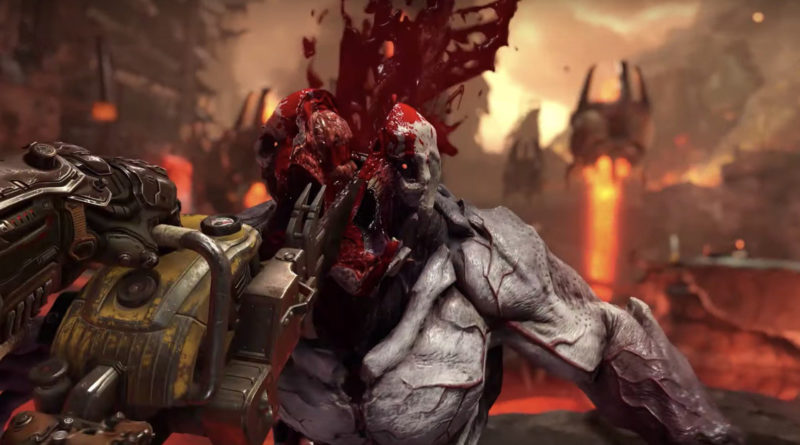‘Doom Eternal’ Review: Sinfully Great on Next-Gen
The 2016 Doom reboot was something of a small miracle, injecting a whole new life into the stale first-person shooter genre by bringing it back to its run-and-gun roots, this time amping up the intensity and insanity. It was also remarkably simple, exploiting the same gameplay loop over and over again to satisfying results, with a simple campaign and story never designed to be anything more than fun. The one drawback of this is that it was perhaps too one-note, in some sense suffering form its own genius, with the game’s many levels, encounters, and gameplay moments all sort of bleeding together. 2020’s Doom Eternal, which I finally got around to playing on PS5, is equally miraculous in that it improves greatly on what made Doom work, and crafts a campaign that is almost perfect, but for a few flaws.
The first thing that stuck out was the variety. Much like Man of Steel, Doom’s constant bombardment of frenetic action can become numbing over time, ultimately reducing the enjoyment of each violent encounter. Doom Eternal, on the other hand, incorporates a great deal more platforming and puzzle solving to navigate its levels, which serve as much needed palate cleansers between killing demons. Another big change is the story, which is much more heavily plotted, focusing more on dense lore and characters. While this makes the story needlessly complicated and kind of a mess, it is a fantastic excuse to get more creative with level design, and bring the player to a wider variety of worlds. 2016’s Doom alternated between Hell and Mars, which due to their similar color palate and many similar environmental features, eventually started to look identical to me. Doom Eternal expands the list to include not only Hell and Mars, but Earth as well as other dimensions full of different people and creatures. As a result, no two levels look or play the same leading to some truly memorable experiences, like the Super Gore Nest in the middle section, or Nekravol and Urdak towards the end. The only disappointment was, oddly enough, the final level, Final Sin, which seemed relatively uninspired compared to the rest of the game.
Gameplay is still a blast and follows much of the same rules. Never stop moving, play very aggressively, be prepared to be constantly near death or out of ammo before picking up some much needed resources. The enemy types are well varied and look great, and the game does a great job of setting you up for success by teaching you how to play not only though on screen prompts but from subtle behavioral conditioning in the controls themselves. Doomguy, for example, is not capable of moving slowly. He either runs full blast or not at all, so it’s best to keep moving. The weakest part of the combat is arguably the boss battles, which struggle to adapt the best aspects of the main gameplay to fit their ends, often feeling like tedious endurance tests more than anything. The Slayer Gates, on the other hand, are optional challenge encounters against waves of enemies that offer arguably the highest and most challenging expression of Doom Eternal’s combat.
Technically, the game is nearly flawless and plays gorgeously on PS5. The controls are tight, load times are nil, the graphics are excellent, and I experienced no glitches or frame rate issues. The carnage is especially spectacular, as enemies wear the damage they take in a satisfyingly graphic manner. Watching each bullet blow pieces out of a hellish monster is truly a sight to behold and is only further assisted by the PS5 controller’s haptic system.
Doom Eternal is really just 2016’s Doom, but better. More variety, better pacing, and more carnage. The story might be pointlessly dense and convoluted, but that’s forgivable, since it carries one through such an otherwise great game.




